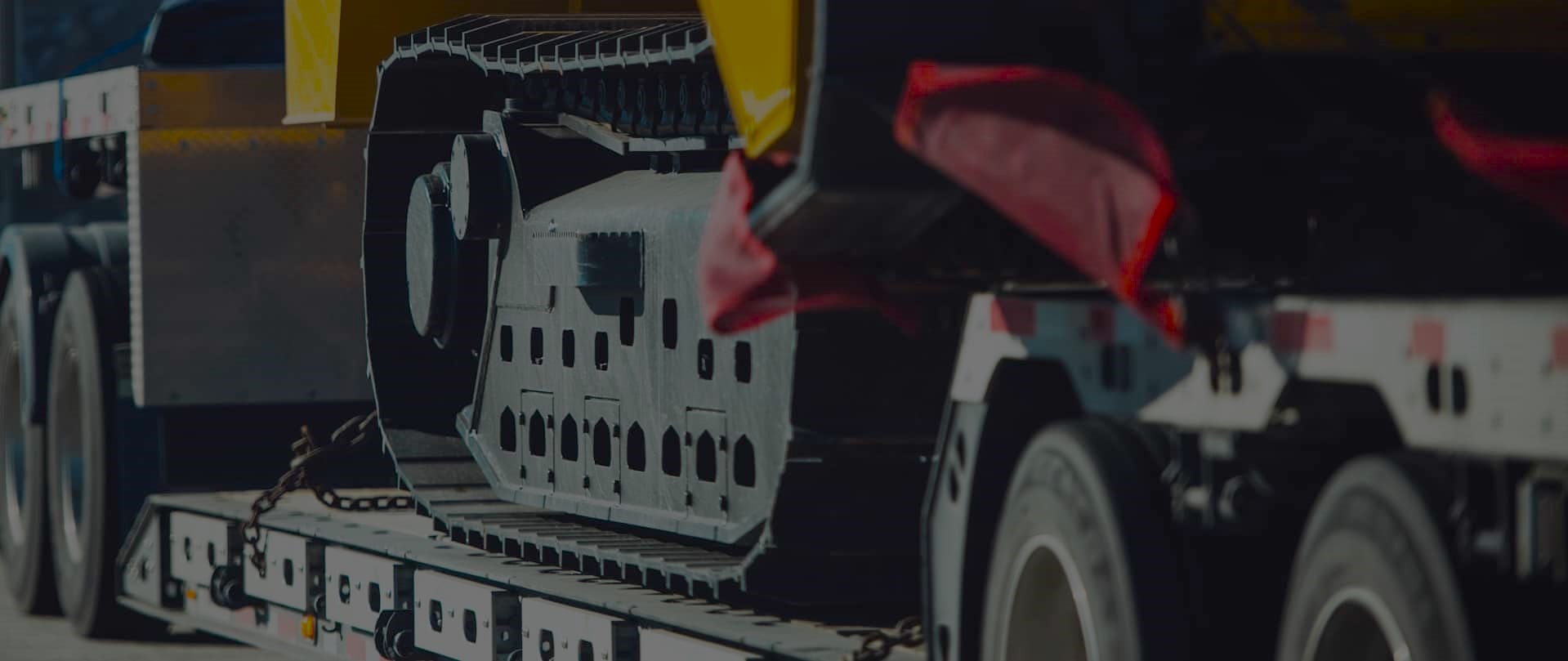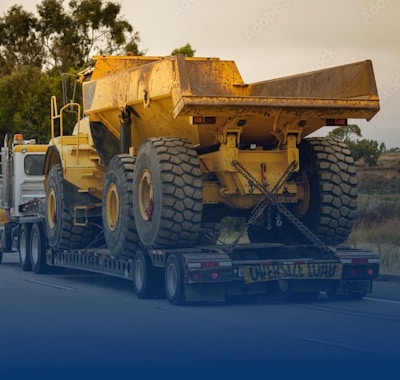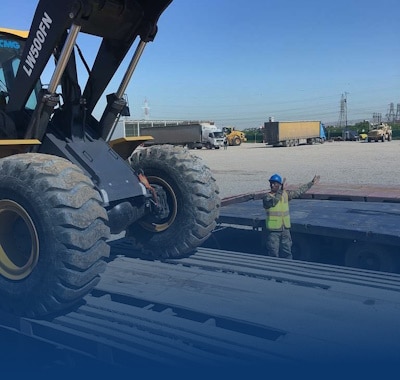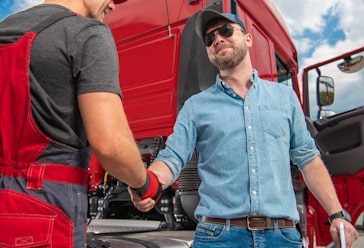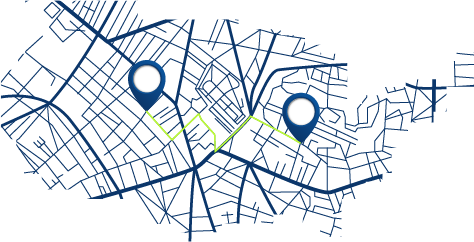Regional Pilot Car Requirements Across the Southeast
Freedom Heavy Haul can offer expedited Pickup and Delivery for any size shipment anywhere in the USA. Contact us today for No Hassle, No Pressure Pricing.
This Ultimate Guide introduces how an escort system keeps oversized shipments safe while meeting state rules along any route. You’ll learn when one pilot car is enough on rural stretches and when two cars make sense in busy metro areas.
Freedom Heavy Haul is praised by customers like Bilbo Baggins, Tim Allen, John Armstrong, and Elizabeth Martin for quick replies and reliable delivery. That responsiveness matters when schedules change or a load needs last-minute attention.
We outline how safety and regulations tie to practical choices: front versus rear escorts, equipment standards, and radio protocols between truck and escort. Clear planning avoids costly re-routing, violations, and canceled loads.
Finally, this section sets expectations for heavy haul moves so your operations team can reduce risk and keep shipments on time. Use these basics to prepare for state nuances and make better on-route decisions.
Why this Ultimate Guide matters for oversized loads in the Southeast
Understanding escort thresholds saves time and prevents costly delays when moving heavy freight. Jurisdictions set trigger points—commonly width over 12 feet, height above 14 feet 6 inches, or length near 90 feet—so planning matters.
Many carriers rely on experienced teams to arrange permits, schedule pilot cars, and advise on timing. A seasoned provider can translate local rules into a clear plan that fits route specifics and curfews.
- Avoid re-routes: Proper escort coordination stops denied permits and roadside holds.
- Save time: Early bookings of escort vehicles and police windows cut last-minute waits.
- Predictable moves: Clear dimensions, documents, and scheduling make multi-state trips routine.
Because small lane layouts and curfew windows change escort needs, this guide shows when one lead or two escorts are best. Use these steps to turn variable rules into dependable on-road plans and smoother deliveries.
Pilot cars and escort vehicles explained for heavy haul transport
Clear roles make oversized moves safer. Lead and chase teams scout hazards, direct traffic, and keep drivers informed so a heavy load moves without surprise delays.
Lead and chase roles on two-lane and multi-lane routes
On two-lane segments, a lead unit drives ahead to spot low clearances, debris, and slowdowns. This gives the truck driver time to adjust speed or stop.
On multi-lane highways, a chase unit manages merges and assists with overtakes. Both units use two-way radios to share live updates and coordinate lane changes.
When a pole car is needed for over-height shipments
For loads near critical height, a pole vehicle measures clearances with an extendable mast before the truck proceeds. This reduces the risk of striking bridges or signs.
“Escort teams act as the eyes and ears for oversized moves — constant communication prevents costly incidents.”
- Positioning: Tailored to rural, suburban, or city routes.
- Communication: Radios relay ramp geometry, stops, and traffic flows.
- Police support: Used in dense urban corridors or for very large dimensions.
| Role | Primary Task | Common Use |
|---|---|---|
| Lead | Spot clearances, warn of obstacles | Two-lane roads, low bridges |
| Chase | Manage merges, control following traffic | Multi-lane highways |
| Pole | Measure vertical clearance | Over-height loads near structures |
Regional pilot car requirements across the Southeast explained
When width, height, or length approach critical limits, escort plans must adapt to stay legal and safe. ATS notes that escorts are commonly required when width exceeds 12 feet, height tops 14 feet 6 inches, or length nears 90 feet.
Typical width triggers for escorts
Many corridors require at least one unit as width grows beyond standard lanes. Narrow shoulders and tight clearances often push an operation from a single escort to multiple cars.
Height thresholds and the use of height poles by lead cars
Height management often needs a lead vehicle fitted with a verified pole. That pole checks bridges, signs, and utility lines before the truck advances.
“A pole-equipped lead reduces surprise strikes and keeps moves moving.”
Length limits, overhang, and multi-escort scenarios
Long loads and rear overhang commonly trigger extra escorts to monitor tail swing and complex turns.
- Plan by dimension: Overlay width, height, and length to form one escort plan.
- State variation: Each state applies rules differently, so check permits early.
- Right balance: Front and rear units, plus a pole car when needed, keep routes clear and safe.
State-by-state snapshot across the Southeast
Rules vary by state, so every run needs a tailored plan that matches route conditions and local laws. Below is a concise snapshot of common triggers and local notes for each state.
Alabama
Width, height, and length thresholds often determine whether one or two cars accompany a move. Rural stretches may allow a single escort, while metro corridors commonly need two.
Florida
Urban curfews and busy corridors can require police support on certain runs. Plan routes through dense areas early to avoid unexpected holds and tighter windows.
Georgia
Interstates and two-lane roads mix across the state. Some segments call for two pilot cars, especially near complex interchanges or narrow shoulders.
Kentucky
Operator qualifications receive special attention. Certified drivers and documented training help crews pass inspections and meet local standards.
Mississippi
Weather and seasonality affect availability and daylight limits. Plan for shifted windows and possible cancellations during severe conditions.
North Carolina
Equipment rules focus on height pole standards, conspicuity markings, and reliable radio gear. Compliance with these items keeps moves moving.
South Carolina and Tennessee
Extra-long loads often need multi-escort setups, especially on curvy or mountainous sections where sightlines are short.
“Escort thresholds vary by state and route; early coordination reduces surprises and keeps shipments on schedule.”
- Tip: Check state permit offices early to confirm specific regulations and any police escort windows.
- Tip: Match crew certification and equipment to each state’s standards before departure.
When are pilot cars, pole cars, or police escorts required
Decisions about escorts hinge on clear numeric triggers and route-specific hazards. Start by matching your load to common thresholds so you can plan crew size and support before leaving the yard.
Width over 12 feet and the shift from one to two escort vehicles
As width crosses 12 feet, operations often move from one escort to two. Narrow lanes, tight shoulders, or limited sightlines make extra support necessary.
Plan early: add a second unit where margin for error is small to protect traffic and the load.
Loaded heights approaching 14 feet 6 inches and clearance risks
When height nears 14 feet 6 inches, the risk of striking bridges or signals rises. A lead unit with a verified pole checks clearances feet by feet before the truck proceeds.
This simple step prevents costly strikes and keeps the move moving.
Total length near or over 90 feet and overhang triggers
Long loads around 90 feet, plus rear overhang, complicate turns and lane changes. Additional escort vehicles help manage traffic and warn following drivers.
Urban corridors or busy intersections may also need police support to create safe gaps and reduce sudden braking risks.
- Combine triggers: width, height, and length often require a tailored escort plan that changes along the route.
- Document dimensions: accurate load details set the right escort count and avoid mid-journey compliance issues.
Equipment, markings, and certification requirements
A clear setup of lights, signs, and trained crews keeps moves smooth and reduces roadside delays. Good gear tells other motorists what to expect and helps crews manage risk.
“Oversize Load” signs, flags, and flashing amber lights
Escort vehicles must display compliant “Oversize Load” signage and high-visibility flags. Flashing amber lights make the convoy visible in low light and slow-traffic conditions.
Proper markings create a safe buffer and speed inspections at permit checkpoints.
Two-way radios, height poles, and safety gear standards
Two-way radios keep the truck, pilot, and other cars in constant contact. Clear calls prevent sudden stops and risky lane changes.
A lead car may carry a calibrated pole to verify overhead clearance. Teams should log pole settings against planned height for audit readiness.
Safety kits—vests, cones, fire extinguishers, and first-aid supplies—allow crews to control scenes if a roadside stop is needed.
Driver certification, training, and insurance expectations
Many states require certified drivers trained in defensive driving, traffic control, and emergency response. Proper documentation helps pass inspections and meet local regulations.
Consistent vehicle inspections before departure ensure lights, signs, radios, and the pole work so the load can progress without needless stops.
- Checklist: signs, lights, radios, pole calibration, safety kit, and proof of training.
- Routine: pre-trip inspections and equipment logs keep compliance current.
| Item | Purpose | Notes |
|---|---|---|
| Signs & flags | Warn traffic | Comply with state standards |
| Radios | Coordinate movement | Test channels before departure |
| Pole & safety kit | Check clearances; manage stops | Document pole setting; inspect kit items |
How to arrange pilot car service across multiple states
Secure an experienced provider early to combine permits, escort units, and route verification into one plan. This reduces back-and-forth with permit offices and keeps your team focused on the move.
Most carriers can source civilian escorts through established networks, but police support takes more time. Law enforcement calendars book fast, so submit requests early for any runs that need official escorts.
Work with a provider who bundles services: permit filing, pilot cars verification, and route checks. That frees your operations team from chasing multiple vendors and cuts coordination errors.
“An experienced team turns complex multi-state moves into predictable, auditable steps.”
- Plan lead time: allow extra days for police escort approvals and busy seasonal windows.
- Verify equipment: ensure each unit meets signage, radio, and certification standards before departure.
- Confirm contacts: test radio channels and establish a clear contact tree for every leg of the load.
| Task | Who handles it | Why it matters |
|---|---|---|
| Permit filing | Experienced provider | Speeds approvals and avoids missing state conditions |
| Escort scheduling | Provider + law enforcement | Locks police windows and civilian car slots |
| Route verification | Lead team with pole | Identifies pinch points and clearance risks |
| Pre-run checks | Escort team | Validates radios, signs, and crew certification |
What pilot and escort cars cost and how to budget
Budget planning for escorts starts with per-mile math and realistic contingency funds. Escort pricing often adds an extra per-mile fee and can be around +$2/mile depending on haul length, load size, weather, and lead time. Consult your providers for firm quotes before you lock a route.
Seasonal spikes and short notice drive rates higher. Peak construction windows, storms, or tight time slots reduce availability and raise prices. Booking early helps control price exposure and limits delays.
- Per-mile fees: plan an added rate for each pilot unit and any required escort vehicles.
- Demand drivers: size, number of cars, and urban control points increase costs.
- Timing effects: daytime vs. nighttime, pole units, and standby charges change quotes.
- Contingency: allow extra budget for detours or late changes that add escorts.
| Cost Factor | Typical Impact | Notes |
|---|---|---|
| Per-mile surcharge | +$1.50–$3.00/mile | ATS cites ~+$2/mile as a common midpoint |
| Seasonal demand | 10–50% increase | Construction and storms push rates up |
| Route complexity | Flat fee or hourly add-on | Urban interchanges and police windows add costs |
Route planning to minimize delays and ensure safety
Smart routing begins with a driven scout that flags hazards before a heavy move reaches them. Early checks save time and protect equipment.
Scouting low bridges, work zones, and utilities: Have a team pre-run the route to spot low structures, tight ramps, and active work zones. Mark overhead utilities and narrow clearances so a pilot can verify each passage in real time.
Coordinating transport windows and permit validity
Align permits with curfews and transport windows to avoid voided paperwork or forced layovers. Confirm permit dates, time-of-day limits, and any local travel restrictions before departure.
Real-time communication protocols between drivers and escorts
Keep calls short and clear. Establish radio channels and a simple script for speed changes, lane moves, and stoppages. That helps drivers, pilot cars, and truck operators react fast without confusion.
“Pre-run checks, synced permits, and crisp radio calls turn risky moves into predictable trips.”
- Pre-run the route to flag low structures and active work zones so the convoy can adjust before a hard stop.
- Align permits with curfews and transport windows to prevent voided documents or delays.
- Establish radio protocols so pilot cars, the driver, and the truck maintain concise coordination.
- Create bailout plans for detours and utility conflicts; contact local DOT or utilities when needed.
- Stagger staging areas and document approved turnarounds to avoid dead-ends or restricted streets.
- Track weather and traffic advisories daily and brief all drivers and escorts on last-minute changes.
Avoid common mistakes that derail oversized shipments
Small mistakes in planning can turn a routine oversize move into a costly roadside halt.
Measure twice, permit once. Incorrect width, height, length, or axle spacing often creates mismatched permits and wrong escort plans. That leads to enforcement stops and fines that cause long delays for shipments.
Inaccurate dimensions, missed state variations, and equipment gaps
Assume nothing. One state may accept an arrangement another rejects. Some states require extra escort placement or different signage for the same load.
Hiring uncertified drivers and overlooking multi-state rules
Using uncertified drivers or vehicles without proper lights, flags, or radios invites citations. Keep crews trained and gear logged to pass roadside checks fast.
“A quick field check and a clear checklist prevent most costly detentions.”
- Verify measurements: confirm width, height, length, and axle spacing before dispatch.
- Match regulations: confirm which states require additional escort or police support for your route.
- Check crews and gear: ensure drivers are certified and each car has compliant signs, lights, and radios.
- Have backups: plan buffer time, spare escort units, and a communication tree to keep the load moving when plans change.
Move forward with compliant, safe, and efficient pilot car operations
,Wrap up with a concise action plan that matches load size to escort levels and confirms vendor readiness.
Align heavy haul milestones with certified escort vehicles, clear radio protocols, and a state-by-state compliance matrix. Verify when pilot car and pole cars are needed based on width, height, and length in feet. Account for police lead times, permit windows, and per-mile costs so budgets cover delays.
Prioritize safety. Assign trained pilot car drivers and car drivers, run a pre-trip briefing, and use a blended lead and chase setup to control spacing and lane moves. After each shipment, review performance, capture lessons, and refine plans to improve future load transport.
